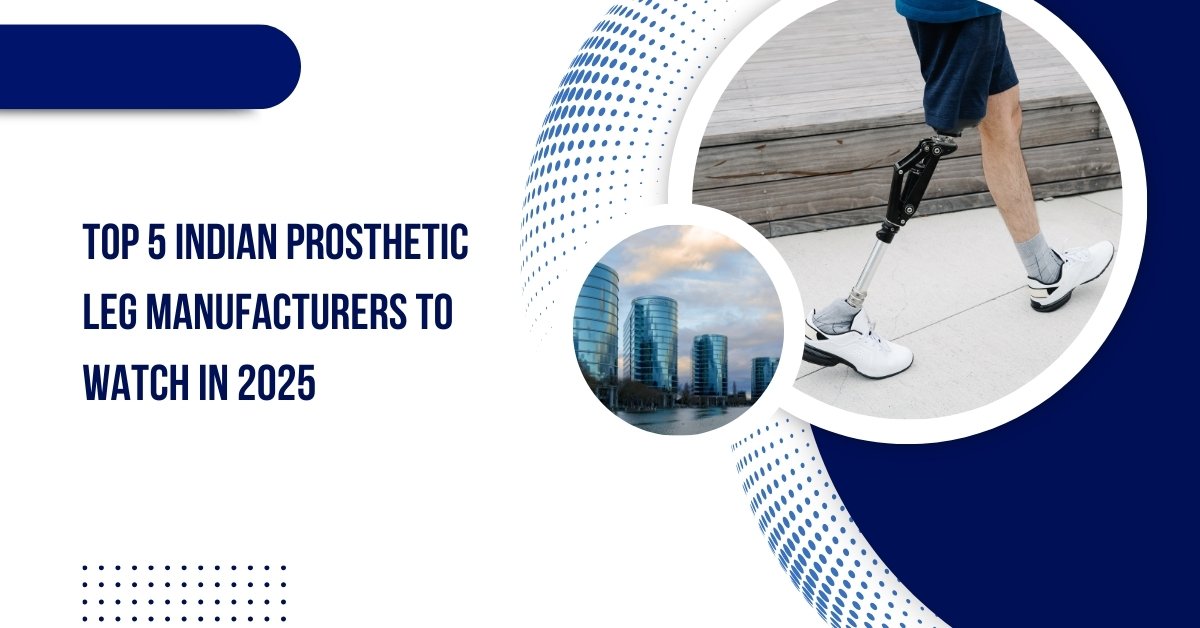In recent years, India’s healthcare and medical device industry has seen impressive advancements, particularly in the field of prosthetics. Companies in this sector have increasingly focused on enhancing the quality of life for individuals with limb loss. Several key players have emerged as leaders in the Indian prosthetics market, each contributing innovative solutions and remarkable products. In this article, we explore the top five prosthetics companies in India in 2025, showcasing their contributions, innovations, and future potential.
1) Proactive Technical Orthopaedics Pvt Ltd.
Proactive Technical Orthopaedics Pvt Ltd, based in Pune, is a leader in manufacturing and delivering high-quality prosthetic and orthopedic components. With a strong commitment to excellence, they produce a wide range of orthotic solutions designed to improve patient care and healthcare outcomes. By utilizing automation, Proactive Technical Orthopaedics has become a prominent name in prosthetic and orthopedic component manufacturing in India.
With over 14 years of experience, Proactive Technical Orthopaedics has built a reputation for delivering innovative, durable, and cost-effective prosthetic devices. Their comprehensive product portfolio includes prosthetic kits, components for various types of prostheses, and machines used in prosthetic and orthotic care
Services and Offerings
- Prosthetic Components
- Prosthetic kits
- Orthotic Components
- Prosthetic machines
- Prosthetic Knee Joint
- Prosthetic Feet
- Child Prosthetics
- Tools and Hand Tools
- Transtibial Prosthesis Below Knee leg
- Transtibial Prosthesis Above Knee leg
- Transradial Prosthesis Below Elbow
- Upper Extremity Prosthetic Silicon Gloves
- Raw Materials for Prosthetics Orthotics
For more detail visit: https://www.protechprosthetics.com/
2) Artificial Limbs Manufacturing Corporation of India (ALIMCO)
The Artificial Limbs Manufacturing Corporation of India (ALIMCO), a Schedule ‘C’ Miniratna Category II public sector enterprise, plays a crucial role in manufacturing prosthetic aids and assistive devices in India. Operating under the Ministry of Social Justice & Empowerment, ALIMCO is dedicated to enhancing the lives of persons with disabilities (PwDs) through its innovative and affordable solutions.
ALIMCO’s vast product range includes prosthetic and orthotic devices, rehabilitation services, and initiatives aimed at empowering individuals with disabilities. The company also engages in various corporate social responsibility (CSR) projects to support PwDs.
Services and Offerings
- Prosthetic and Orthotic Devices
- Rehabilitation Services
- Pradhanmantri Divyasha Kendra (PMDK)
- Empowerment Initiatives
- CSR Programs
For more information, visit: ALIMCO
3) Endolite India
Established in 1995, Endolite India is renowned for bringing advanced prosthetic and orthotic technology to India. Headquartered in New Delhi, Endolite is a part of the Prime Group and has become a key player in the prosthetics industry. The company specializes in manufacturing and distributing prosthetic limbs and orthotic devices through clinics and dealers across India.
Endolite India is widely recognized for its cutting-edge products, which include functional prosthetic limbs, knee and feet systems, and upper extremity prosthetics. Their focus on continuous innovation makes them one of the top companies in the prosthetics market.
Services and Offerings
- Limb Systems
- Prosthetic Knees and Feet
- Prosthetic Feet with Various Functionalities
- Upper Extremity Products
- Orthotics
- Cosmetic Restorations
For more information, visit: Endolite India
4) Rebuilt Clinic
Rebuilt Prosthetics & Orthotics is one of India’s leading providers of advanced prosthetic and orthotic services. The company offers a wide array of products and clinical programs designed to help patients regain independence and improve mobility. Rebuilt Clinic operates as one of the largest rehabilitation product and service providers in India, working closely with clinicians, patients, and healthcare providers to deliver optimal care.
Their services include lower and upper limb prosthetics, spinal orthotics, diabetic foot care, and pediatric products, providing a comprehensive solution to individuals with varying needs. Rebuilt Clinic’s commitment to quality and patient satisfaction has earned them a strong reputation in the prosthetics community.
Services and Offerings
- Lower Limb Prosthetics
- Upper Limb Orthotics
- Spinal Orthosis
- Diabetic Foot Care
- Mobility Aids
- Pediatric Products
- Cosmetic Restoration
For more information, visit: Rebuilt Clinic
5) Ottobock India
Ottobock India, a division of Ottobock, a global leader in prosthetics and mobility solutions, provides a wide range of products designed to improve the quality of life for individuals with limb loss or impairment. Through their advanced prosthetic limbs, orthotic devices, and mobility aids, Ottobock India empowers individuals to regain independence and mobility.
Ottobock is committed to using the latest technological advancements to offer life-changing solutions for people with disabilities. Their products cater to individuals across India, aiming to meet the diverse needs of their clientele and help them lead fulfilling lives.
Services and Offerings
- Prostheses
- Orthoses
- Wheelchairs
For more information, visit: Ottobock India
The Future of Prosthetics in India
The prosthetics industry in India is undergoing a transformation driven by technological innovations, inclusivity, and a strong focus on patient care. These companies are reshaping the landscape of disability care by offering personalized solutions that improve the mobility and quality of life for individuals with limb loss. As advancements in prosthetics technology continue to progress, these companies are expected to lead the way in making prosthetics more accessible, functional, and affordable for people across India.
In conclusion, through their innovations, focus on accessibility, and commitment to improving lives, these leading prosthetic companies are not just advancing technology—they are also changing societal attitudes toward disability. By collaborating with healthcare professionals and advocating for inclusivity, they are helping to create a more accessible future for all.
